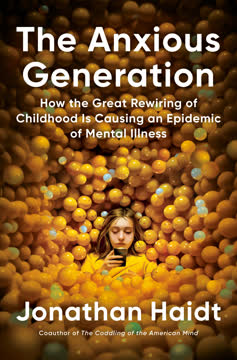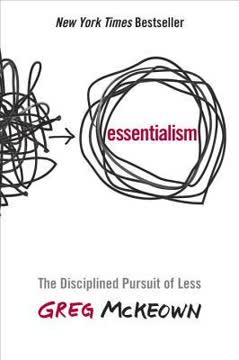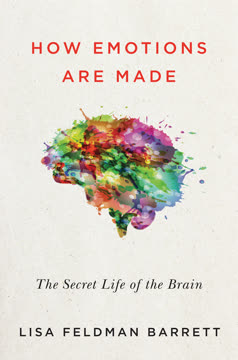Key Takeaways
1. Human Nature is Wired for Goodness, Not Just Selfishness.
Born to Be Good reveals how survival of the kindest may be just as fitting a description of our origins as survival of the fittest.
Challenging the selfish view. Contrary to prevailing ideologies (like Homo economicus or certain interpretations of evolutionary theory) that portray humans as primarily self-interested, competitive, and vigilant to the bad, the book argues for an evolved capacity for goodness. This capacity, rooted in our biology and social instincts, is just as fundamental to human nature as self-preservation.
Darwin's overlooked insight. Charles Darwin, often misinterpreted as solely advocating for ruthless competition, actually believed that social instincts like sympathy were powerful forces in human evolution. He argued that communities with more sympathetic members would flourish and reproduce more successfully, suggesting that kindness itself was favored by natural selection.
Beyond self-interest. While self-interest, competition, and vigilance to threat are real aspects of human nature, they represent only half the story. The book presents scientific evidence demonstrating that humans are also wired for cooperation, altruism, and connection, driven by a suite of positive emotions that facilitate a meaningful life and healthy societies.
2. Positive Emotions Are Evolved Instincts, Not Cultural Veneer.
Our moral capacities, Darwin reasoned, are rooted in sympathy.
Universal emotional language. Pioneering research by Paul Ekman demonstrated the universality of certain facial expressions across cultures, suggesting a biological basis for emotions like happiness, sadness, anger, fear, disgust, and surprise. This challenged the social constructivist view that emotions are purely learned cultural phenomena.
Emotions are embodied. Building on William James's radical idea, the book presents evidence that emotions are not just abstract concepts but are deeply embedded in our physiology. Distinct emotional states are associated with specific patterns of activity in the autonomic nervous system and facial musculature, providing a biological foundation for our emotional experiences.
Moral intuition. Emotions serve as our "moral gut," providing rapid, intuitive judgments about fairness, harm, virtue, and reciprocity. Jonathan Haidt's work suggests that these emotional intuitions often precede and guide our more deliberate moral reasoning, highlighting the essential role of feelings in ethical living.
3. Emotions Serve as Reliable Signals of Commitment and Moral Intuition.
Emotions are involuntary commitment devices that bind us to one another in long-term, mutually beneficial relationships.
Solving the commitment problem. Meaningful relationships require individuals to prioritize long-term bonds over short-term self-interest. Emotions, particularly their involuntary and hard-to-fake expressions, act as signals of an individual's commitment to others, helping us identify trustworthy partners for cooperation and intimacy.
Beyond words. While language can be easily manipulated, emotional displays offer more reliable clues to a person's true intentions and moral inclinations. Certain facial muscle movements, for example, are difficult to produce voluntarily, making them more trustworthy indicators of genuine emotional states and underlying commitments.
Wired for connection. The orbitofrontal cortex, a region of the brain involved in processing rewards and social information, plays a key role in our capacity for moral sentiments and social connection. Damage to this area can impair an individual's ability to experience and signal emotions like embarrassment, leading to difficulties in navigating social norms and forming healthy bonds.
4. Embarrassment: An Evolved Signal for Appeasement and Reconciliation.
This subtle display is a sign of our respect for others, our appreciation of their view of things, and our commitment to the moral and social order.
More than just awkwardness. Embarrassment is not merely a sign of confusion or thwarted intention; it is a distinct emotional display with a specific social function. Its components (gaze aversion, head movements down, awkward smiles, face touches) are vestiges of appeasement behaviors seen in other species.
Making peace. The embarrassment display acts as an appeasement signal, particularly after social blunders or norm violations. By signaling submissiveness, modesty, and respect for the social order, it prompts forgiveness and reconciliation from others, helping to repair damaged relationships and prevent conflict.
A moral barometer. The capacity for embarrassment is linked to an individual's commitment to social norms and the welfare of others. Studies show that individuals prone to violence or those with damage to the orbitofrontal cortex (like Eadweard Muybridge after his accident or patient J.S.) exhibit a reduced capacity for embarrassment, highlighting its role in maintaining social harmony.
5. The Duchenne Smile: A Genuine Signal of Happiness and Social Connection.
The right kind of smile brings the good in others to completion.
Beyond the polite grin. Not all smiles are created equal. The Duchenne smile, characterized by the activation of the orbicularis oculi muscle around the eyes (creating crow's feet), is a genuine signal of felt enjoyment and happiness, distinct from polite or masking smiles.
A social glue. The Duchenne smile is a powerful tool for building social bonds. It is associated with positive emotional experiences, activates reward centers in the brain (dopamine), reduces stress-related physiology in both the smiler and the perceiver, and promotes trust and affiliation.
Predicting life outcomes. Studies, such as the analysis of Mills College yearbook photos, suggest that the warmth and genuineness of a person's smile can predict long-term well-being and relationship satisfaction. Women with warmer smiles in their yearbook photos reported:
- Less anxiety and more positive mood over 30 years
- Healthier marriages and greater relationship satisfaction
- Increased sense of competence and achievement
6. Laughter: A Powerful Social Tool for Play, Tension Release, and Cooperation.
Laughter is an instant vacation.
Social and contagious. Laughter is overwhelmingly a social phenomenon, far more likely to occur in the presence of others. It is highly contagious, spreading rapidly through groups and creating a shared emotional state.
Physiological release. Laughter is intertwined with breathing, particularly exhalation. It reduces heart rate and blood pressure, calming the body's fight-or-flight response and promoting a state of relaxation. This physiological effect contributes to its role in tension release.
Framing play and cooperation. Laughter signals a shift to a non-literal, playful mode of interaction. It originated in primate play and serves as a "cooperation switch" in humans, transforming potentially tense situations into collaborative exchanges. Studies show laughter during conflict discussion improves relationship satisfaction, and laughter during bereavement helps individuals cope with loss by providing a momentary "vacation" from distress.
7. Playful Teasing: Negotiating Social Dynamics and Building Intimacy.
Teasing is a ticket to travel to the landscape of the human imagination.
More than aggression. Teasing is defined as intentional provocation accompanied by "off-record markers" – nonverbal cues or linguistic violations (like exaggeration, repetition, or shifts in tone) that signal the provocation is not meant literally but in jest. This distinguishes it from bullying or pure aggression.
Lessons from jesters. Like court jesters and fools throughout history, teasing uses playful mockery and violations of conventional communication to comment on social norms, identities, and hierarchies. It creates a space for pretense and alternative perspectives.
Building bonds. Teasing serves important social functions:
- Negotiating status and hierarchy in groups
- Testing commitments to social norms
- Exploring romantic interest and building intimacy
- Transforming conflicts into playful negotiations
When done artfully and reciprocally, teasing strengthens relationships and increases positive emotions like shared laughter and affection.
8. Touch: The Ancient Language of Connection, Trust, and Well-being.
Touch is both the alpha and omega of affection.
Evolved for connection. The evolution of human skin (hairlessness) and hands (dexterity) created a powerful medium for tactile communication. Touch is a primary sensory experience, wired into our nervous system as a fundamental reward.
Physiological benefits. Touch triggers a cascade of positive physiological responses:
- Activation of the orbitofrontal cortex (reward center)
- Release of oxytocin (promotes trust and devotion)
- Release of endorphins (pleasure and pain relief)
- Reduction in stress hormones (cortisol) and HPA axis activity
- Activation of the vagus nerve (calming and caretaking)
Essential for thriving. Touch is critical for physical and mental vitality, particularly in early development. Studies show touch therapy benefits premature babies (weight gain), reduces anxiety and depression (elderly, depressed mothers), and enhances immune function.
Language of trust. Touch is a powerful signal of trust and cooperation. Simple touches, like a hand on the arm, can increase generosity in economic games and are a universal component of greeting rituals across cultures. It is a primary way we communicate pro-social emotions like sympathy, gratitude, and love.
9. Love: Multiple Forms Essential for Human Development and Bonds.
The first great love is what Victor never felt, that between parent or caretaker and child.
Foundational caretaker love. The love between parent and child is the bedrock of human development. Early attachment experiences, built on touch, gaze, voice, and responsive care, shape an individual's "working model" of trust and intimacy, influencing relationships throughout life. Deprivation of this love (like Victor, the Wild Boy of Aveyron) has profound negative consequences.
Romantic love and desire. Human desire is unique in its orientation towards pair-bonding (unlike many primates) and its decoupling from immediate procreation (concealed ovulation). Romantic love, fueled by desire, idealization, and physiological changes (oxytocin, deactivating threat circuits), serves as a powerful commitment device for long-term relationships.
Companionate love and love of humanity. Beyond passionate love, enduring relationships rely on companionate love, built on shared experiences, kindness, and mutual support. Humans also possess a capacity for the "love of humanity" (agape), a feeling of connection and devotion to fellow group members and strangers, essential for community health and altruism.
10. Compassion: A Biologically Wired Instinct for Caretaking and Altruism.
Compassion is a biologically based emotion rooted deep in the mammalian brain, and shaped by perhaps the most potent of selection pressures humans evolved to adapt to—the need to care for the vulnerable.
Darwin's "strongest instinct". Darwin argued that sympathy (compassion) was a primary social instinct, crucial for the survival and flourishing of human communities. This challenges historical views that dismiss compassion as weak or unreliable.
The vagus nerve connection. The vagus nerve, a bundle of nerves connecting the brain to the heart, lungs, and digestive organs, is proposed as the physiological basis of compassion. It innervates caretaking muscles (face, voice), slows heart rate, and is linked to oxytocin release, facilitating calm, affiliative behavior.
Motivating altruism. Research by Daniel Batson demonstrates that compassion is a genuine, other-oriented state that motivates altruistic action, even when selfish motives (like escaping distress or gaining praise) are present. Compassion is not blind; it is specifically attuned to the suffering and vulnerability of others.
Cultivating care. Individuals with higher resting vagal tone ("vagal superstars") tend to be more extraverted, agreeable, optimistic, and experience more compassion and awe. Compassion can be cultivated through practices like meditation and fostered in environments that promote responsive care, empathy, and connection.
11. Awe: Connecting Us to the Collective and Fostering Reverence.
Awe diminishes the press of self-interest and reorients the mind to interconnection and design.
Beyond the divine. While historically linked to religious experience, awe can be triggered by diverse stimuli: nature (John Muir's Sierras), art, music, charismatic individuals, grand ideas, or collective action. It involves perceiving something vast that challenges our current understanding (accommodation).
Physical and mental shifts. Awe has a distinct physiological signature, including goose bumps (piloerection, linked to collective expansion) and activation of the vagus nerve (connection). Mentally, it shifts the sense of self from individual traits to a feeling of being part of something larger, fostering modesty and a sense of common humanity.
Promoting collective good. Awe evolved to help humans subordinate self-interest and fold into social collectives. Experiences of awe promote a sense of unity, reverence, and gratitude for shared resources and traditions. Studies show awe increases generosity and shifts self-representation towards collective identities.
12. The "Jen Ratio": A Measure of Social Well-being and Meaningful Life.
If I were given one metric to take the temperature of the social well-being of the individual, the marriage, a school, community, or culture, the jen ratio would be my choice.
Balancing good and bad. The "jen ratio" is a simple metric for assessing the balance of positive, uplifting interactions (bringing the good in others to completion) versus negative, cynical ones (bringing the bad in others to completion) in a given context.
Indicator of health. A high jen ratio is proposed as a hallmark of well-being at multiple levels:
- Individual: Engaging in acts of kindness increases personal happiness.
- Marriage: Happy couples attribute positive events to their partner's good intentions and see virtues in faults (high jen ratio).
- Nation: Higher levels of trust among citizens correlate with increased economic prosperity and reduced inequality (high jen ratio).
A lens for living. The book encourages readers to view the world through the lens of the jen ratio, noticing and cultivating the subtle manifestations of human goodness (smiles, touches, laughter, acts of compassion, moments of awe) that contribute to a meaningful life and a more humane world.
Last updated:
Review Summary
Born to Be Good explores the science behind human emotions and meaningful life. While some readers found it insightful and uplifting, others felt misled by the title, expecting a self-help book rather than a scientific examination of facial expressions and emotions. Many appreciated Keltner's research on kindness, compassion, and cooperation, but some found the content dry or overly academic. The book's strengths lie in its exploration of evolutionary psychology and emotional development, though some reviewers desired more practical applications and a stronger conclusion.
Similar Books










Download PDF
Download EPUB
.epub digital book format is ideal for reading ebooks on phones, tablets, and e-readers.






